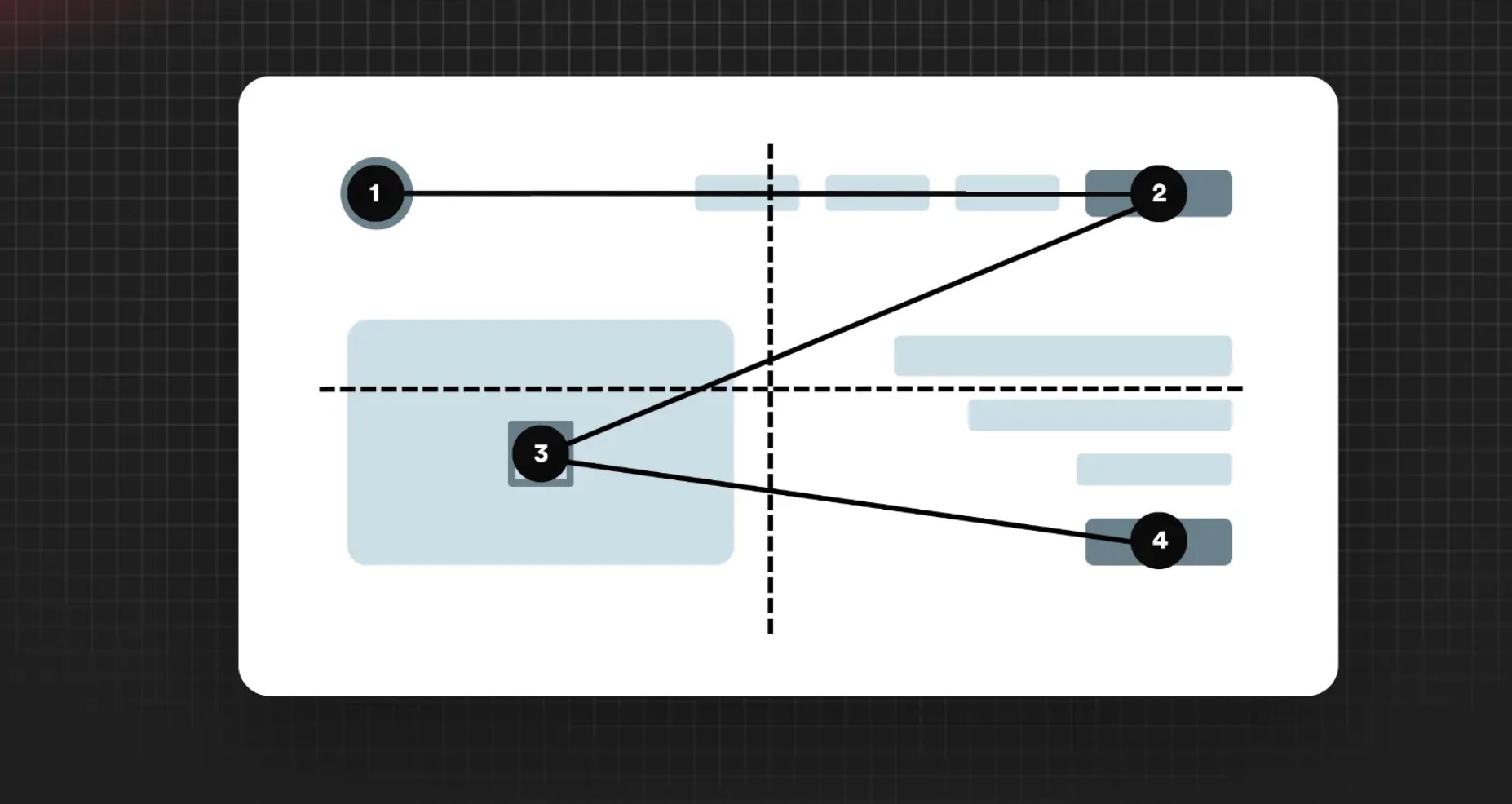Crafting visuals that captivate and engage your audience is an essential aspect of effective marketing. In today’s digital age, where attention spans are shorter than ever, visuals play a crucial role in grabbing attention and conveying information quickly. One popular design approach that has proven to be highly effective is the Z pattern design. In this comprehensive guide, we will explore the concept of crafting visuals with Z pattern designs, understand its significance, and learn how to create visually appealing content that leaves a lasting impact on your target audience.
Crafting Visuals with Z Pattern Designs
Crafting visuals with Z pattern designs involves strategically placing key elements in a way that aligns with the natural reading pattern of most individuals. This design approach leverages the psychological tendencies of readers to create a seamless flow that guides their eyes from the top left corner to the top right, then diagonally down to the bottom left, and finally across to the bottom right.
By aligning your visual elements along this Z-shaped path, you can effectively capture and retain your audience’s attention, ensuring they consume the most crucial information. Let’s explore how you can implement this design technique to create compelling visuals that resonate with your viewers.
1. Understanding the Z Pattern
To effectively craft visuals with Z pattern designs, it is crucial to have a thorough understanding of how the Z pattern works and its influence on user behavior. By comprehending the natural reading pattern of individuals, you can strategically place elements in a way that maximizes engagement. Here are key points to help you understand the Z pattern:
- Left-to-right reading: People generally read from left to right, a behavior ingrained in most cultures. Understanding this tendency allows you to capitalize on the familiar flow of information.
- Top-to-bottom scanning: After reading from left to right, readers tend to scan downward, consuming information in a top-to-bottom manner. This scanning behavior should inform the placement of your visual elements.
- Z-shaped path: By following the natural flow of reading, the Z pattern guides the eyes of viewers along a Z-shaped path. This path starts from the top left corner, moves horizontally to the top right, diagonally down to the bottom left, and finally ends by moving across to the bottom right.
- Attention on key elements: The Z pattern ensures that important elements placed along the path receive maximum attention. By aligning essential information along this path, you can significantly improve the chances of your audience engaging with it.
- Ingrained behavior: The Z pattern aligns with the natural reading behavior of individuals, making it an intuitive and effective design choice. By utilizing this pattern, you can enhance user experience and make it easier for your audience to digest your visual content.
Remember, understanding the Z pattern is the foundation for successfully crafting visuals that captivate and engage your audience. By leveraging this knowledge, you can strategically place elements and guide the flow of information to create visually appealing and impactful content.
2. Establishing a Strong Visual Hierarchy
Crafting visuals with Z pattern designs requires a clear visual hierarchy. Your audience should easily distinguish between primary, secondary, and tertiary elements within your visual content. By utilizing visual cues such as size, color, and typography, you can guide your viewers along the Z-shaped path, ensuring they engage with the most critical information first.
3. Compelling Headlines and Captivating Images
When it comes to crafting visuals with Z pattern designs, compelling headlines and captivating images play a crucial role in grabbing and maintaining the viewer’s attention. A strong headline serves as the gateway to your visual content, enticing the audience to delve deeper. It should be concise, engaging, and relevant to the message you want to convey. By using attention-grabbing words and intriguing phrases, you can pique curiosity and encourage viewers to explore further.
In addition to compelling headlines, captivating images are equally important in capturing the viewer’s interest. Images have a powerful impact on our emotions and can convey messages more effectively than text alone. Selecting high-quality, relevant images that align with your content enhances its visual appeal and helps tell your story. Whether it’s striking photography, eye-catching illustrations, or compelling graphics, visuals that resonate with your audience will leave a lasting impression and contribute to the overall success of your Z pattern design.
To optimize the impact of your visuals, consider the synergy between your headlines and images. Aim for a harmonious balance where the headline creates curiosity and the image reinforces the message. When the two elements work seamlessly together, they create a powerful visual experience that captivates and engages your audience. Remember to ensure that the headline and image align with the overall purpose of your visual content and contribute to its effectiveness in conveying your message.
4. Utilizing Call-to-Action Elements
When crafting visuals with Z pattern designs, incorporating well-placed call-to-action (CTA) elements is essential to drive user engagement and guide your audience towards the desired actions. Whether you want them to make a purchase, subscribe to a newsletter, or explore more of your content, strategically positioning CTAs along the Z-shaped path ensures they catch the viewer’s attention. Here are some effective CTA techniques:
| CTA Technique | Description |
| Button Prompts | Use visually appealing buttons that clearly state the action. |
| Subscription Form | Encourage viewers to subscribe for updates or exclusive offers. |
| Social Media Icons | Provide icons for easy sharing on various social media platforms. |
| Interactive Elements | Incorporate interactive elements that engage viewers and prompt actions. |
By utilizing these CTA techniques, you can guide your audience’s attention and increase the likelihood of them taking the desired actions. Remember to keep your CTAs visually distinct from other elements, use contrasting colors, and provide clear instructions. Additionally, consider the placement of CTAs along the Z pattern path to ensure they are strategically positioned and highly visible.
Including well-designed CTAs not only enhances user engagement but also provides valuable opportunities to drive conversions and achieve your marketing objectives. By carefully crafting your call-to-action elements and aligning them with the Z pattern, you can effectively guide your audience towards meaningful interactions with your visual content.
5. Balance and White Space
Maintaining balance and utilizing white space is essential when crafting visuals with Z pattern designs. Avoid cluttering your content with excessive elements, as it can overwhelm your viewers and disrupt the flow. Embrace the power of white space to create a visually appealing and easy-to-digest design that guides your audience seamlessly through the Z pattern.
Frequently Asked Questions (FAQs)
Q1: What types of visuals work best with Z pattern designs?
When implementing Z pattern designs, various visual formats can work effectively. Infographics, website banners, social media posts, and even print materials like brochures and flyers can benefit from this design approach. The key is to align your visual elements in a way that complements the Z-shaped reading pattern.
Q2: How can Z pattern designs enhance user engagement?
Z pattern designs enhance user engagement by presenting information in a structured and easily consumable manner. By following the natural reading pattern, you can ensure that your audience absorbs the most important information. This not only increases engagement but also improves comprehension and message retention.
Q3: Are there any tools or software available to assist in crafting visuals with Z pattern designs?
Yes, there are several tools and software options available to help you create visuals with Z pattern designs. Popular graphic design tools like Adobe Photoshop, Illustrator, and Canva offer various templates and features that enable you to align your visual elements along the Z pattern effortlessly.
Q4: Can Z pattern designs be applied to video content as well?
Absolutely! While Z pattern designs are commonly associated with static visuals, they can be adapted for video content too. In video production, you can use techniques such as eye-tracking studies, motion graphics, and scene composition to guide viewers along the Z-shaped path, ensuring they don’t miss critical information.
Q5: How can Z pattern designs improve the effectiveness of my marketing campaigns?
Z pattern designs have the potential to significantly improve the effectiveness of your marketing campaigns. By strategically crafting visuals that follow this pattern, you can increase the chances of your audience noticing and engaging with your key messages, leading to higher conversion rates and overall campaign success.
Q6: Are there any drawbacks or limitations to using Z pattern designs?
While Z pattern designs are highly effective in many scenarios, they may not be suitable for every type of visual content. Certain complex or interactive designs may require alternative approaches. Additionally, it’s crucial to ensure that your visuals don’t become predictable or monotonous, as this can diminish their impact over time.
Crafting visuals with Z pattern designs offers a powerful method to captivate your audience and effectively convey your message. By understanding the Z pattern, establishing a strong visual hierarchy, using compelling headlines and captivating images, incorporating well-placed CTAs, and embracing balance and white space, you can create visually engaging content that leaves a lasting impression.
So, the next time you embark on a visual content creation journey, remember the Z pattern and leverage its potential to make your visuals stand out. By combining creativity, strategic placement, and a deep understanding of your target audience, you can craft visuals that resonate, inspire action, and drive the success of your marketing efforts.


